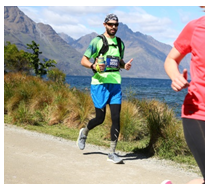Simply…YES! Running reduces your risk of all-cause mortality (cause of death) by 63%! Is it Worth Doing? The whole idea of this blog is not to get you running marathons in 2 weeks or breaking world records (however this is great if you wish! 🙂 ) the idea is to get thought provocation and question your exercise ideas and promote discussion around healthy living. Let us start with some simple questions that you can ask yourself and your kin:
- How active are you?
- What level of activity am I/are we doing currently?
- Does running directly relate to reduced risk of death?
- What is the required exercise for healthy living?

As you may have discussed with friends and family (as I have had this discussion multiple times with clients throughout the years), if there was a magic pill that could be taken to reduce your risk of all-cause mortality (death by any cause) including cardiovascular disease, obesity, diabetes and cancer then given the nature of our current society, the quick fix, the majority of us would say… YES sign me up!
I’m sorry to say this is not the option (although it may be one day) and is not the ideal solution on our journey to optimal health. A recent study by Artelo et.al., 2012 concluded that running will reduced your risk of all-cause mortality (especially cardiovascular disease) by 63%. This is crazy when you think about it…63%! I will discuss more on this later, firstly let’s try and clear up some misconceptions with running and related injuries.
There is the thought out there that running will cause increased wear and tear on your knees and cartilage and that this will lead to early osteoarthritis and result in early potential joint replacement. A recent review of the research by Timmins et.al, 2016 suggest that this is not the case and running cannot be directly correlated to the development of osteoarthritis. In fact the evidence also suggests that subjecting your cartilage to load (in a controlled and gradual manner – progressively loading through running) actually increases the thickening of the knee cartilage over time. So, what does this tell us, running isn’t linked to the development of osteoarthritis and running has been suggested to increase cartilage thickness in your knees over time (Mosher, Liu & Torok, 2010).
The body will adapt as long as the stress placed on the body is less than the body’s ability to adapt!
What about the idea that running reduces the height of your discs in your back and leads to increased wear and tear? Recent research suggests that this too is not the case. Belavy et al, 2017 has shown that in long distance runner and joggers that their disc heights were greater with improved hydration leading to improved strength! The way to approach these topics, or the way that I like to think about them, is that the body adapts! The human body is best not to be thought of as a manufacturing machine that over time wears out, the human body adapts to the loads (exercise) that it is subjected to…as long as the loading is at a rate that the body can adapt! Often I see (and have been very guilty of the same) of doing too much too soon leading to injury 🙂 . Just remember, one size doesn’t fit all and a good program is always recommended!
So what are the recommendations? How should we approach this?
The American Heart Association (2010) has coined the phrase “Ideal Cardiovascular Health”. This is broken up into two main areas that equate to optimal cardiovascular health and should be simultaneously present. They are – Risk behaviours and Risk Factors. The two main areas need to be in the absence of clinical cardiovascular disease – heart failure, stroke, coronary heart disease.
Risk behaviours
- Abstinence of smoking within the last year
- Ideal body mass index (BMI)
- Physical activity at goal levels – described as 150 mins of moderate intensity exercise per week or 75 mins of vigorous exercise per week
- A diet that promotes good cardiovascular health
Risk Factors
- Normal Cholesterol levels
- Blood Pressure < 120/80 mmHg ( not on medication for same)
- No Diabetes
The idea is based on meeting the 7 mentioned points above. The study mentioned preciously by Artelo et.al., 2012 has shown that someone that meets 3-4 of the above points has a 55% reduced risk of death from cardiovascular disease compared to someone who only meets 1-2 of the points, and someone who meets 5-7 of the above points has a 63% reduced risk of death (cardiovascular cause) compared to someone who meets 1-2 of the points above.
So…putting it all together…what is the take home message?
Running is a great form of exercise that produces endorphins and ‘feel good’ hormones, if transitioned and loaded properly can improve cartilage health and when combined with a healthy lifestyle can reduce your risk of death from cardiovascular causes by up to 63%. The Body adapts to the training load that is applied to it and when mechanical load is sufficient for tissue adaption then health and performance improves. Everyone is different and a personalised program is recommended 🙂
Joel
Physiotherapist & Exercise Scientist
Certified Professional with “The Running Clinic”

